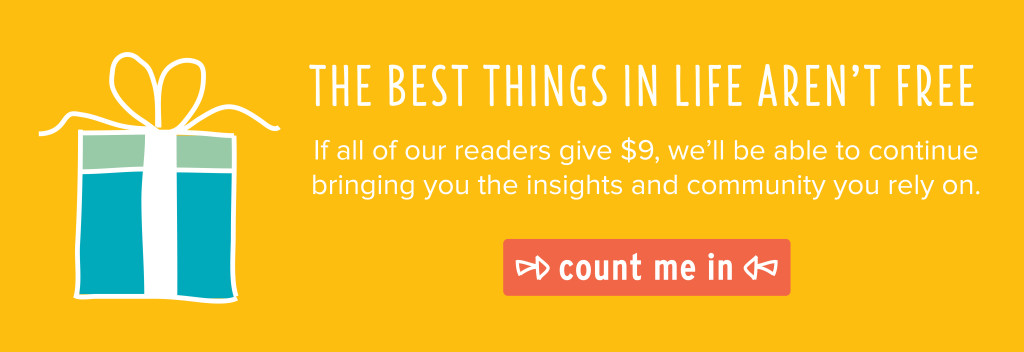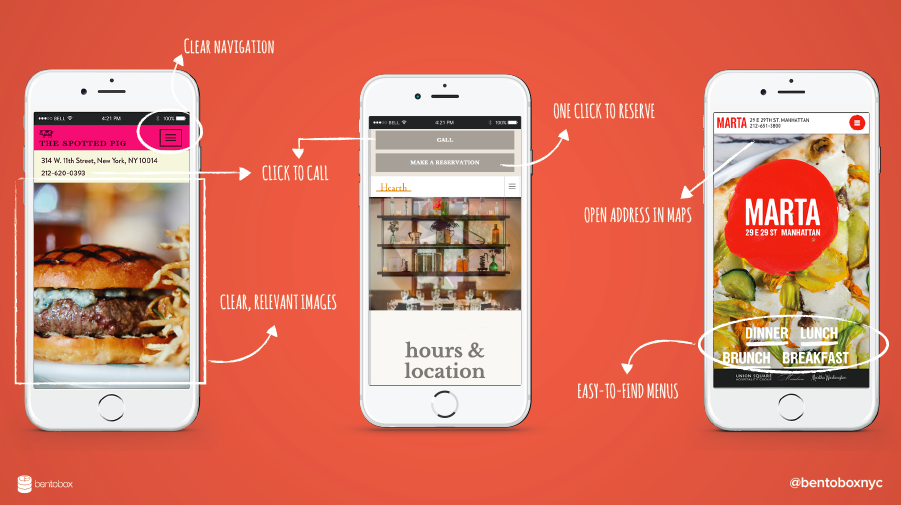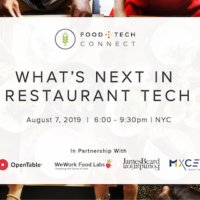Restaurant websites are notoriously clunky and antiquated. They are often slow, difficult to navigate (especially from a phone) and offer downloadable pdf menus (!), to name just few issues. In an age where more people visit a restaurant’s website than its brick-and-mortar location, having an outdated, confusing site does not bode well for customer acquisition.
Techstars graduate BentoBox wants to solve this problem by making it easy for restaurants to build a mobile-first website for a fraction of the cost of working with an agency. Unlike website builders like Squarespace or WordPress, BentoBox understands that restaurants don’t have the time to build their own sites. Instead, the website development platform takes a restaurants existing assets (menu, logo, copy, design) and creates a website using one of its templates. Outside agencies, developers and designers can also access the platform to build restaurant websites.
Restaurants are eating it up. Since launching in 2013, BentoBox has on-boarded 200 restaurants in 25 cities around the world, including big names like Danny Meyer’s Union Square Hospitality Group, April Bloomfield’s The Breslin and The Spotted Pig and Major Food Group’s Parm and Dirty French.
What’s the secret to BentoBox’s success? Focusing on restaurants’ needs. We chatted with co-founder Krystle Mobayeni to learn more about the startup’s growth strategy, lessons learned and advice for burgeoning restaurant tech startups. Our interview has been edited for brevity and clarity.
______________
Food+Tech Connect: What is your business model and how has it shifted since you launched in 2013?
Krystle Mobayeni: BentoBox is a software as a service (SaaS) platform for restaurants. Restaurants pay a monthly fee and then can also opt-in to various add-ons based on their needs. The model itself hasn’t changed since 2013, but it has expanded to include the suite of tools we’ve built over the years. As restaurants have come to us with their vision of what a digital hospitality experience really means, we have created more and more “add-on” features to the platform.
One thing to call out here is that we’ve made it very inexpensive for restaurants to start out on BentoBox. Before BentoBox, if you wanted a decent web experience for your restaurant, you had to pay many thousands of dollars – and this didn’t include the cost of on-going iterations, including simple things like updating menus. We’ve eliminated this large upfront cost, and added tools that allow a restaurant to have complete control over their digital presence. This is a huge win for the restaurant operator.
FTC: Can you walk me through what using Bentobox looks like for a restaurant? How is it different than using a less expensive website builder like Squarespace?
KM: First, let me try to dispel the notion that restaurants build their own websites. They don’t. I’ve talked to many hundreds of restaurant operators, and I have hardly ever heard of a restaurant owner or restaurant team member building their website themselves. Whether they hire a consultant, an agency, or even the bartender’s cousin – they aren’t building the website themselves.
This was a key realization for us. It’s why we made the decision early on that BentoBox would not be a website builder. Instead, what we’ve built is a robust developer platform that allows agencies, developers, and designers – including our in-house team – to create best-in-class digital experiences for restaurants without the high costs. This same platform puts the controls in the restaurants’ hands to make on-going updates and changes, without knowing anything about coding.
The second key difference between us and something like Squarespace is that we are truly built for the hospitality industry. By focusing on a single vertical, everything in our product is hyper-tailored to our customers. This includes features like online-to-print menu management, press alerts and management, social (including Yelp and Foursquare) integration, physical and digital gift cards and more. A horizontal website builder could never provide this kind of restaurant-specific customization.
FTC: You worked with big name restaurants out of the gate, including Danny Meyer’s restaurants, The Meatball Shop and Major Food Group’s Parm and Dirty French. How did the strategy affect user acquisition and growth? Did you see a trickle down effect?
KM: Starting with these well-known restaurants has been – and continues to be – key to our growth. We were able to establish trust in the community early on. The industry is really tight knit, and one defined by sharing and hospitality. Finding a trusted vendor goes a long way, and we owe a lot of our WOM growth to this strategy of starting at the top. Every restaurant we’ve worked with loves us – because we solve such a fundamental problem for them and, frankly, because we’re the only solution of this kind that really understands the true needs of restaurants. This love translates into word of mouth growth.
Now that we’ve started outbound growth efforts, it’s becoming obvious how important it is that we already have a strong track record of working with some of the best restaurants in the world. If these leading restaurants use – and love – BentoBox, then you can be sure others will take a look at what we’re offering. This helps us cut through the noise in an industry exhausted by being constantly bombarded by sales pitches.
FTC: How did participating in the Techstars Accelerator help you grow your business? What were your key lessons learned?
KM: Techstars was a great experience for BentoBox. Our timing was perfect; we had already found clear product market fit and were ready to accelerate growth. The program helped bring our amazing team together and connected us with an A+ network of entrepreneurs and investors. We also became far more data-driven, using key metrics to help tell our story and make choices about what to build next.
FTC: What has been your major challenge(s) with building BentoBox? And what advice to you have for burgeoning restaurant tech entrepreneurs facing a similar challenge?
KM: One thing that really differentiates BentoBox from other restaurant tech companies is that we are focused on the restaurants and their needs first. We do understand and serve consumers – but our primary focus is on the restaurant. We’re constantly thinking: how do we help restaurants build their business? How do we make it easier for restaurants to operate? What are restaurants trying to achieve and how can we help them do this? It turns out, this restaurant-centric approach is actually pretty rare.
Most restaurant tech companies think first about the consumers, rather than about the restaurant; this almost never works. So, my advice is: build a deep understanding of what it means to create and run a restaurant – and serve the restaurant itself. Then build your product with your early and marquee customers. Listen closely. They’ll tell you everything you need to know. Trust them even more than you trust yourself. Otherwise, adoption is going to be tough to come by.
FTC: What’s next for BentoBox? Do you have any exciting partnerships, features or projects on the horizon?
KM: We are 100 percent focused on building the best digital platform in the world for restaurants. Our process for doing this literally involves just talking to each of our restaurants about what they need and, when enough people ask for the same thing or a wonderful, unique idea surfaces, iterating on it quickly and adding it to the platform if it makes sense. Some of our upcoming features include e-commerce and digital marketing tools.




![What the World Eats [Infographic], 9 Food & Beverage Startup Accelerators + More](https://foodtechconnect.com/wp-content/uploads/2014/10/Screenshot2014-10-27at10.06.19AM.100643-1-200x200.png)


